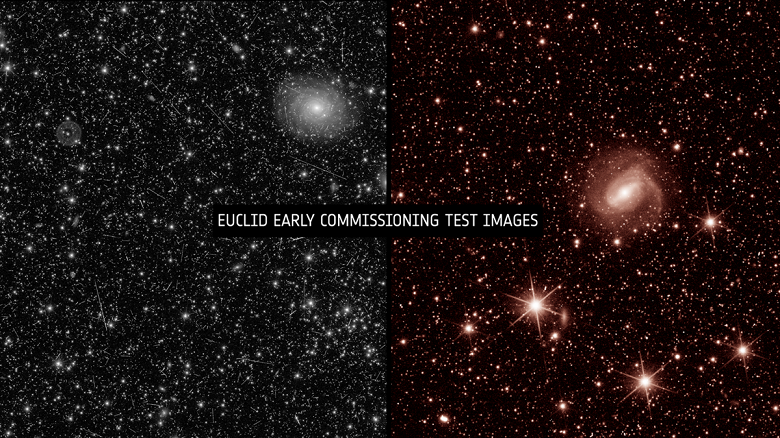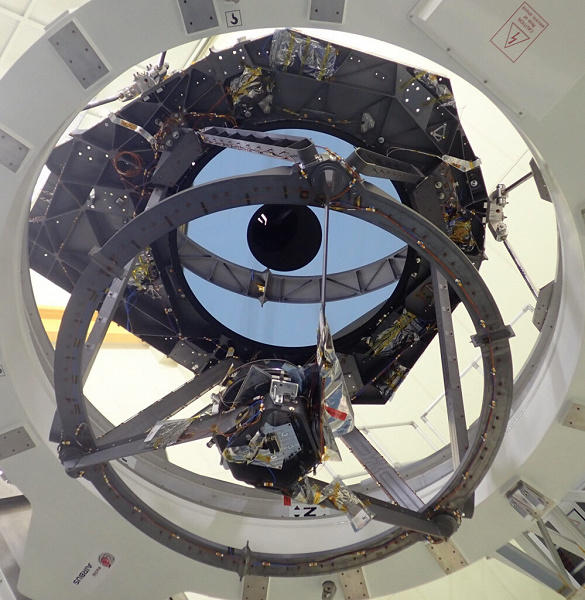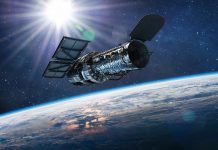The Euclid Space Telescope took test images. Expected to publish its first scientific results in January 2024, the Euclid mission will explore dark matter and dark energy to deepen our understanding of the evolution of the Universe
“After twelve years of development and production of Euclid, it is delightful and moving to see these first images. But it will be possible to show them to the public after the scientific group has worked on them. The first scientific publication will be published in January,” said Giuseppe Racca, head of the Euclid project at ESA.
Launched on a SpaceX Falcon 9 rocket from Cape Canaveral on July 1, the 2-ton space telescope is designed to study the Universe for answers to how dark matter and dark energy shaped the Universe over billions of years.
It took Euclid a month to arrive at the L2 Lagrange point between the Earth and the Sun, located 1.5 million kilometers from Earth in the direction opposite to the Sun. Once this point was reached, the space equipment had to undergo a two-month check before scientific research could begin. However, during testing of the instruments, problems were discovered that prevented the telescope from providing the highest resolution images. The problems were serious enough that the ESA suspended tests and began looking for solutions. Within a few weeks, solutions were found and the situation improved significantly, allowing the telescope to obtain hundreds of test images of galaxies.

Giuseppe Racca said that once Euclid was in orbit, the science team discovered that extraneous light was entering the telescope’s field of view, which was affecting the light sensor and making it difficult to observe very dim galaxies. This was a big problem that could have caused the mission to fail. To solve this problem, the team rotated the telescope two and a half degrees on its axis. This was enough to get rid of excess light.
To take multiple images or perform spectral and photometric measurements in the infrared spectrum, the position sensor must be able to accurately hold the telescope in the desired direction for 75 minutes, guided by calibration stars. But in some positions, high-energy cosmic rays and solar protons interrupted the sensor, creating signals it misinterpreted as real stars. Scientists took into account this possible effect in simulations, but in the real space environment, the effect was stronger than expected.
Results of test shootings of the Euclid telescope
This problem was discovered in early August and on August 18 they interrupted measurements where extraneous light was observed while performing other observations. Development and testing of new software to solve the problem took about two months. After a software update over the past two weeks, the telescope has been operating normally, but scientists need to ensure it continues to function properly during the six-year mission. Every morning they check the data coming from ESA Chile’s space complex, and so far everything is going well.

The quality of Euclid’s work is comparable to that of Hubble, but Euclid can cover in one week what Hubble could cover in five years. More than 1000 photographs of amazing quality have already been transferred. Some scientists have accessed the images and found them remarkable. Over six years, Euclid will observe billions of galaxies and create the largest three-dimensional map of the Universe ever created. Some 2,000 scientists around the world are already involved in sharing initial images and data.
In May 2027, NASA’s Nancy Grace Roman Telescope will join the study of dark matter and dark energy with even more powerful instruments. The Euclid and Nancy Grace Roman missions have complementary strategies: Euclid’s earlier survey of large areas of the sky will allow it to carry out a reconnaissance mission, while the second telescope will focus on a smaller area, exploring the Universe with greater depth and precision.




